This post will help in understanding and setting the RPC Endpoint Mapper Client Authentication Policy Using Intune. Here we are going to implement this policy using Intune’s Configuration Profiles. This policy’s main aspect is providing hands-on experience configuring the RPC Endpoint Mapper Client Authentication Policy Using Intune.
RPC Endpoint Mapper Client Authentication Policy setting governs whether RPC clients are required to authenticate when their requests include authentication information for the Endpoint Mapper Service. It’s important to note that the Endpoint Mapper Service on computers running Windows NT4 (across all service packs) lacks the capability to process authentication information provided in this manner.
If you choose to disable this policy setting, RPC clients will not go through the authentication process when interacting with the Endpoint Mapper Service. However, this will enable them to establish communication with the Endpoint Mapper Service on Windows NT4 Server.
On the other hand, enabling this policy setting mandates authentication for RPC clients making calls that include authentication information. As a result, clients initiating such calls won’t be able to communicate with the Windows NT4 Server’s Endpoint Mapper Service.
If you leave this policy setting unconfigured, it effectively remains disabled. In this state, RPC clients won’t undergo authentication when interacting with the Endpoint Mapper Service. However, they can still establish communication with the Windows NT4 Server’s Endpoint Mapper Service.
Note! – This policy’s effects will not take place until the system is rebooted.

- Restrict Unauthenticated RPC Clients Policy using Intune
- Configure Solicited Remote Assistance Policy using Intune
Windows CSP Details RPCEndpointMapperClientAuthentication
We will see Windows CSP Details for this Policy setting RPCEndpointMapperClientAuthentication. This policy setting allows administrators to manage how RPC client authentication is handled, with a particular focus on compatibility with Windows NT4 and enhancing security in RPC communications. The choice of configuration should be based on your network’s specific needs and security considerations.
CSP URI – ./Device/Vendor/MSFT/Policy/Config/RemoteProcedureCall/RPCEndpointMapperClientAuthentication

RPC Endpoint Mapper Client Authentication Policy using Intune
For RPC Endpoint Mapper Client Authentication Policy Using Intune, follow the steps stated below:
- Sign in to the Intune Admin Center portal https://intune.microsoft.com/.
- Select Devices > Windows > Configuration profiles > Create a profile.
In Create Profile, I select Windows 10 and later in Platform, and select Profile Type as Settings catalog. Click on the Create button.
| Platform | Profile Type |
|---|---|
| Windows 10 and later | Settings Catalog |
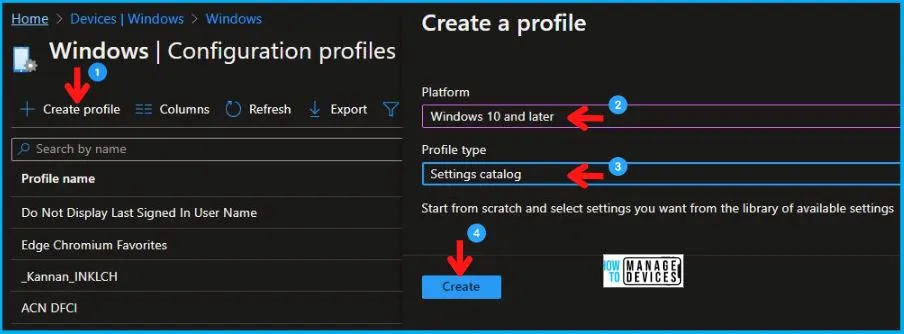
On the Basics tab pane, I provide a name for the policy as “RPC Endpoint Mapper Client Authentication Policy.” Optionally, if you want, you can enter a policy description and proceed by selecting “Next.”
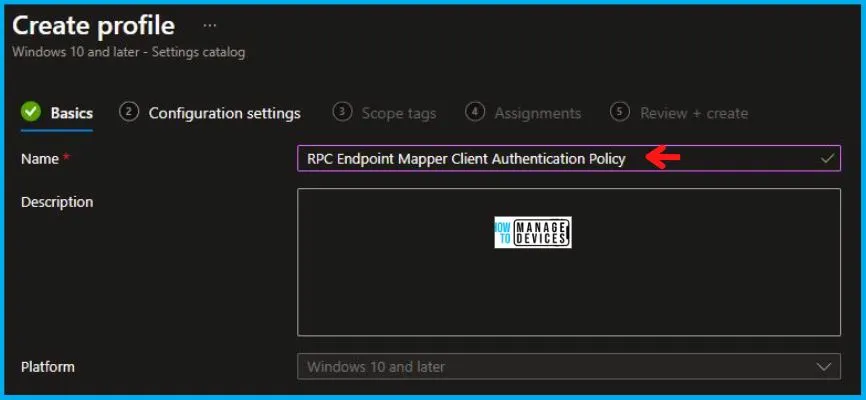
Now in Configuration Settings, click Add Settings to browse or search the catalog for the settings I want to configure.
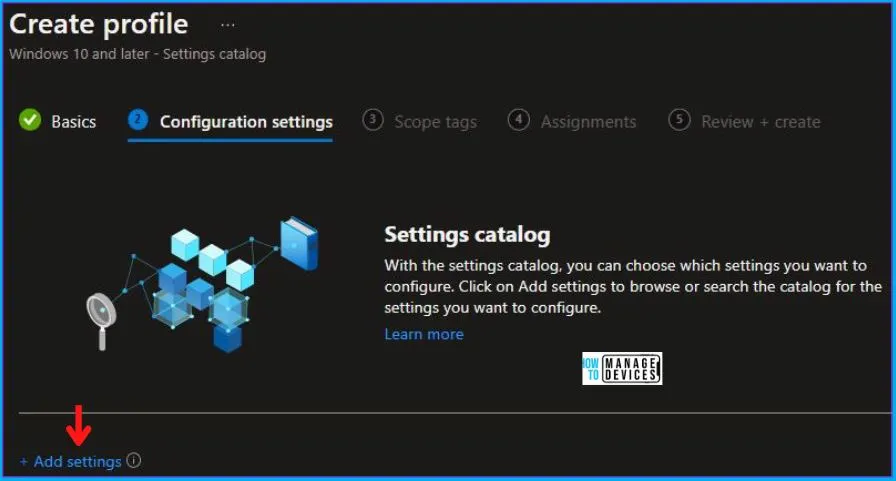
In the Settings Picker windows, I searched for the keyword RPC, I found the category Administrative Templates\System\Remote Procedure Call and selected this.
When I select that option as stated above, I see the sub-category Enable RPC Endpoint Mapper Client Authentication. After selecting that, click the cross mark at the right-hand corner, as shown below.
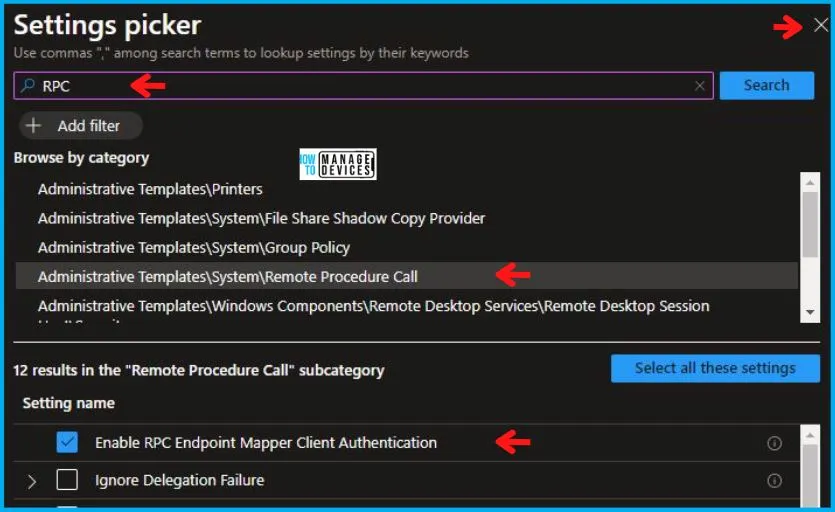
I kept the Enable RPC Endpoint Mapper Client Authentication as Enabled and clicked on Next to continue.
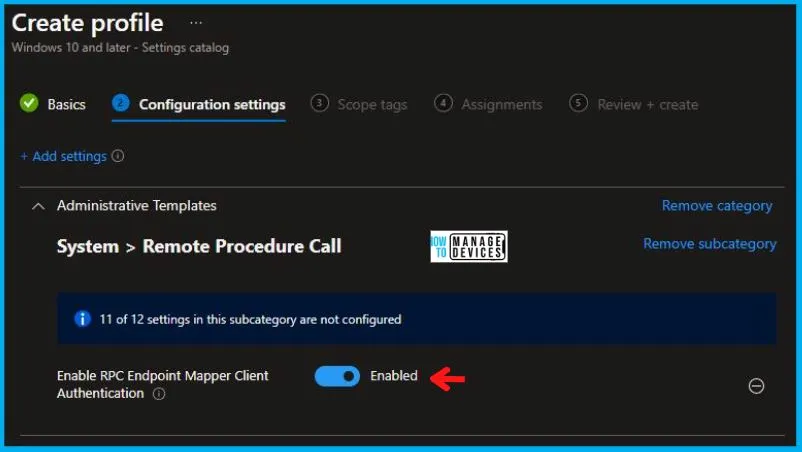
Using Scope tags, you can assign a tag to filter the profile to specific IT groups. One can add scope tags (if required) and click Next to continue. Now in Assignments, in Included Groups, you need to click on Add Groups, choose Select Groups to include one or more groups, and click Next to continue.
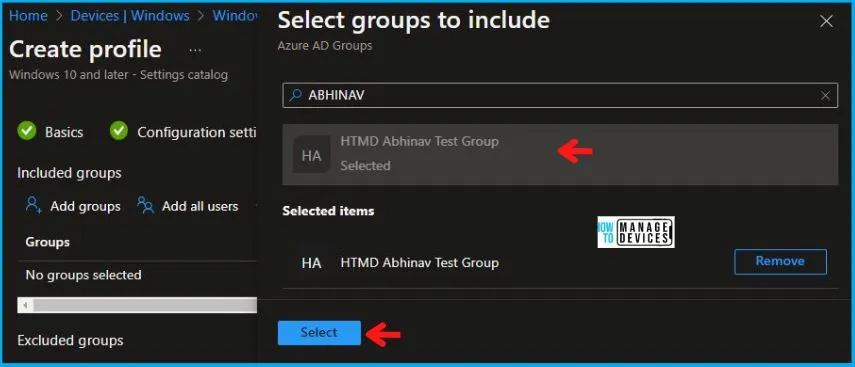
In the Review + Create tab, I review settings. After clicking on Create, changes are saved, and the profile is assigned.
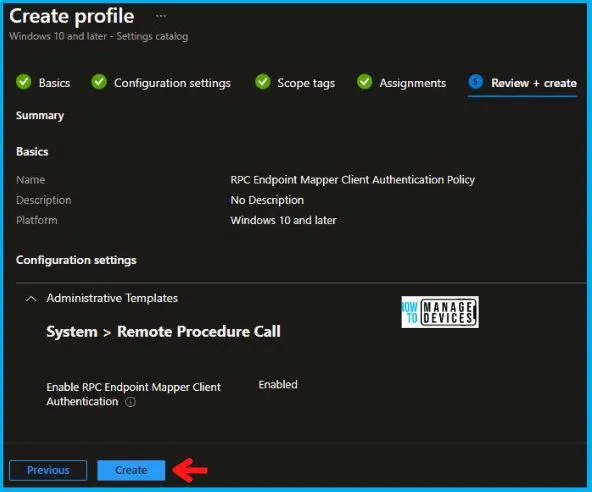
Upon successfully creating the “RPC Endpoint Mapper Client Authentication Policy,“ notification will appear in the top right-hand corner, confirming the action. You can also verify the policy’s existence by navigating to the Configuration Profiles list, where it will be prominently displayed.
Your groups will receive your profile settings when the devices check in with the Intune service. The Policy applies to the device.
Intune Report for RPC Endpoint Mapper Client Authentication Policy
From the Intune Portal, you can view the Intune settings catalog profile report, which provides an overview of device configuration policies and deployment status.
To track the assignment of the policy, you need to select the relevant policy from the Configuration Profiles list. Reviewing the device and user check-in status lets you determine if the policy has been successfully applied. If you require more detailed information, you can click on “View Report” to access additional insights.
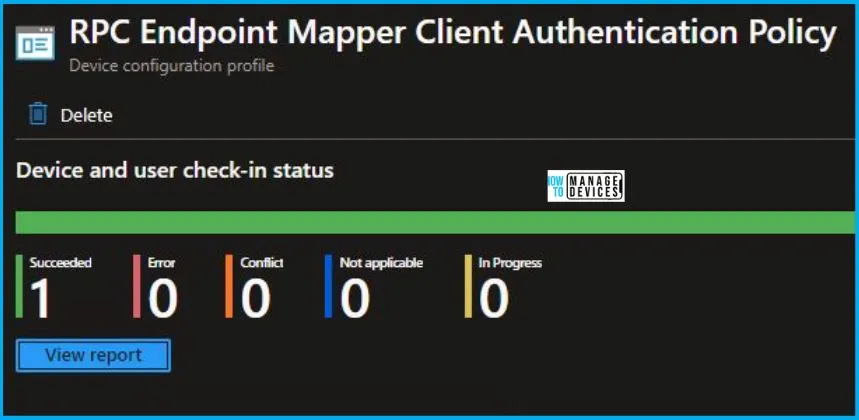
Intune MDM Event Log
To verify the successful implementation of String or integer policies on Windows 10 or 11 devices through Intune, you can leverage event IDs 813 and 814. These event IDs provide valuable insights into the application status of the policy as well as the specific value assigned to the policy on those devices. In the case of this particular policy, the value is a String and is linked to the event ID 814.
By analyzing these event IDs, you can gain a clear understanding of the policy’s application status and the corresponding value associated with it on the devices in question.
To confirm this, you can check the Event log path – Applications and Services Logs – Microsoft – Windows – Devicemanagement-Enterprise-Diagnostics-Provider – Admin.
MDM PolicyManager: Set policy string, Policy: (
